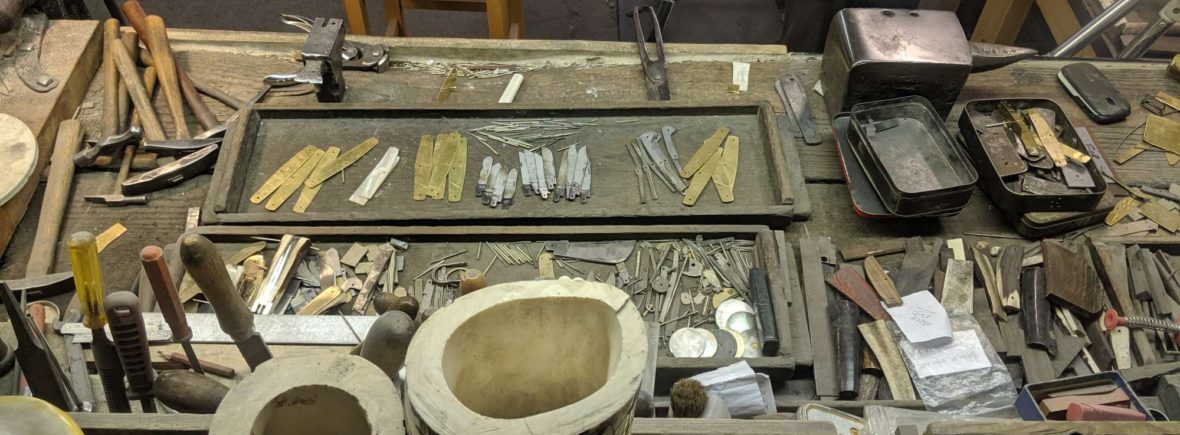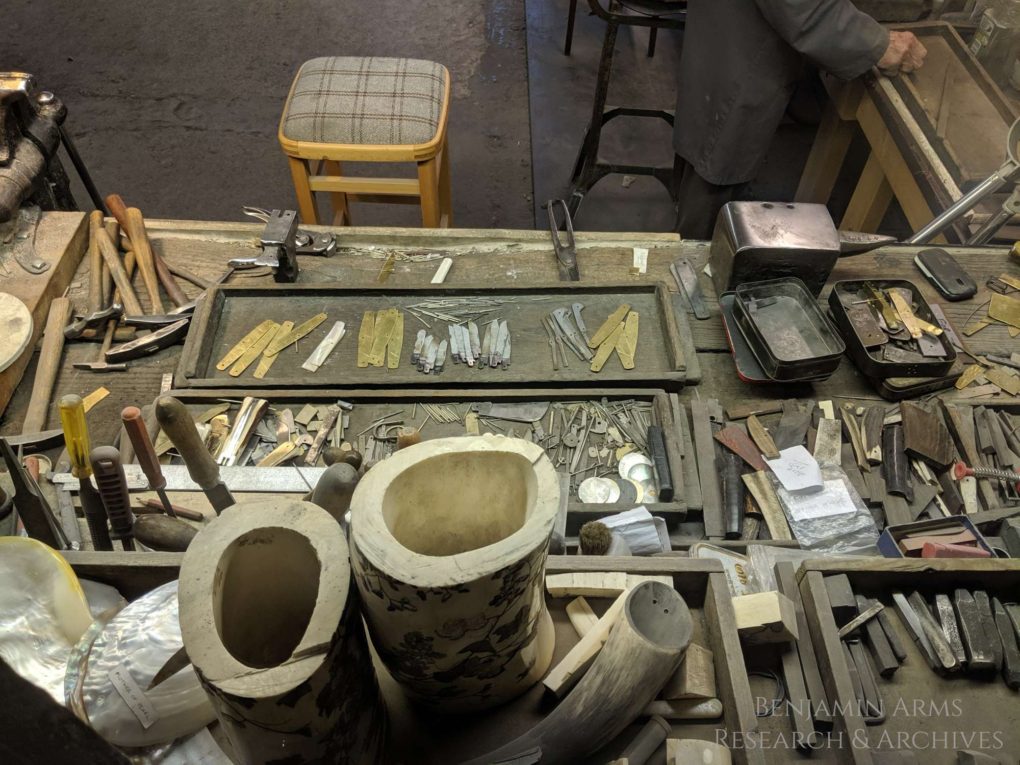The Steel City
Sheffield is a city in Northern England in South Yorkshire. The town sits 30 minutes south of Leeds and an hour’s train ride from York. Though you may know it being the city pictured in the film “The Full Monty” or for their football team, the city has long been acclaimed for its production of steel. The city is located in the Valley Don at the foothills of the Pennines and it’s main River Don is supplied by four tributaries, giving the valley reliable and strong water flow year-round, an important requirement for early water-wheel powered workshops and later steam engines. It was and is still known as “Steel City” for its role in developing mass produced, high quality steel as well as a large, renowned cutlery trade.
Intro credits for The Full Monty (1997) utilizing footage from a 30 minute publicity film titled “City on the Move” commissioned by the Sheffield City Council in 1969.
Crucible Steel
Though early forms of crucible steel production is evident in other parts of the world, it was in Sheffield where the techniques of production were developed by clockmaker Benjamin Huntsman in 1740. Until Huntsman, steel was produced by Huntsman used a coke-fired furnace to achieve temperatures high enough to melt steel and dissolve iron. The long three hour melting time allowed for better diffusion of carbon throughout the iron mixture, but more importantly the high temperature burned off impurities resulting in a very refined and high quality steel with uniform crystalline structure. Huntsman’s process could be done in batches of up to 12 clay crucibles, each capable of holding about 15kg of iron. Implementing Huntsman’s process in Sheffield would lead the city to eventually produce nearly half of the European total production by the mid 1800s. The high quality crucible steel was favored by knife and tool makers, and with the boom in crucible steel production came a surge in Sheffield’s cutlery trade. Sheffield, like Thiers and Solingen became a household name for quality knives and cutlery.
Bessemer Converter
The Bessemer process of steel production was the first industrial process for the mass production of steel, patented by Henry Bessemer in 1856. Using the Bessemer process, iron quantities of between three and five tons could be converted into steel. The process was completed in large furnaces wherein air would blow through the iron from the bottom and exhaust violently from the top, the appearance of which was akin to an erupting volcano. Henry Bessemer’s partnership with W & H Galloway in Sheffield began in 1858 and became one of the largest in the world. The speed and quantities that steel could be made by the Bessemer process dramatically reduced the price of steel and allowed steel to replace iron in all manner of products.
World War Production
Sheffield’s importance in the World Wars cannot be understated. Both wars had an enormous thirst for steel that Sheffield help satiate, including, or perhaps especially, rolled armor playing and speciality steels. In the Kelham museum are preserved countless plaques created by various steel firms listing the “uncounted soldiers” fighting the war by their efforts at the forge and furnace.
Industrial Heritage
Sheffield appreciates and celebrates its industrial heritage. The Sheffield Industrial Museum Trust operates three museums: the Kelham Island Museum, Abbydale Industrial Hamlet, and the Shepherd Wheel Workshop (details below). The steel-making and industrial history also pervades the community with a bar named “The Bessemer”, “The Crucible” live theater, and “Steam Hammer Cafe”, to name a few. Similarly to Solingen, there is a revered class of self-employed artisan cutlers called the “Little Mesters” who in the early days of mass production still produced the finest cutlery available. A few old timers remain (you can see some in their workshops at Kelham Island Museum), and the Sheffield cutlery trade is reportedly reviving with new generations. There are also a few surviving old furnaces preserved around the city, such as the Crucible Stack and Cementation Furnace, which denotes the respect Sheffield has for its legacy.
Things to See in Sheffield, England
Kelham Island Museum: <link> Excellent museum dedicated to the heavy and light industries of the region, including steel and the Sheffield cutlery trades. In the museum are two original and relocated workshops: the Die Sinking Workshop and Tom Perkin’s Workshop for handle making. A must see is the River Don steam engine, the most powerful operating steam engine in Britain weighing in at 400 tons and running on 12,000 horsepower, which they turn on once or twice a day. The museum also has a few working artisans including forgers and cutlers you can watch through their open-window workshops. The Hawley Collection of over 100,000 tools and cutlery is contained in the museum and showcases everything from fancy scissors to Princess Victoria’s hand-saw.
Abbydale Industrial Hamlet: <link> Abbeydale Works was once a producer of agricultural tools and the largest water-powered industrial site on the River Sheaf. Sights of note include the waterwheels, workshops, tilt hammers, a grinding hull, steam engine and the last complete surviving crucible steel furnace in the UK.
Shepard Wheel Workshop: <link> Water-powered grinding workshop producing fine cutting edges along Sheffield’s rivers since the 1500s.
Crucible Stack and Cementation Furnace: Worth the small detours are the Crucible Stack and Cementation Furnace, tenants of Sheffield’s past preserved by the present.
Nearby
Royal Armouries (Leeds): <link> Not much need be said about the Royal Armouries museum in Leeds. It’s one of, if not the largest collection of arms and armour in the world. There’s an exhibit on nearly every type of weapon possible: from ship-mounted whaling harpoon launchers to blow guns. The immense variety sometimes lacks substance on particular subjects of interest (such as the very small, and British-focused fencing sword exhibit), but the mission of educating the public on the variety of weapons, the functions they serve, and their place in history is clear and valuable.
Leeds Industrial Museum (Armley): <link> located in Armley, near Leeds this former factory, now museum was once the world’s largest woolen mill with rotating exhibits focusing on the region’s industrial heritage.

















